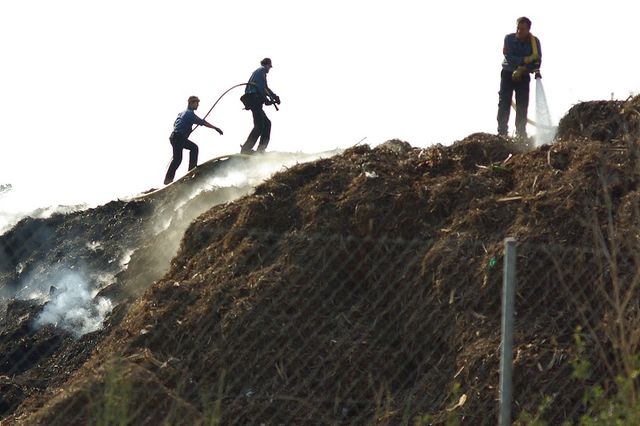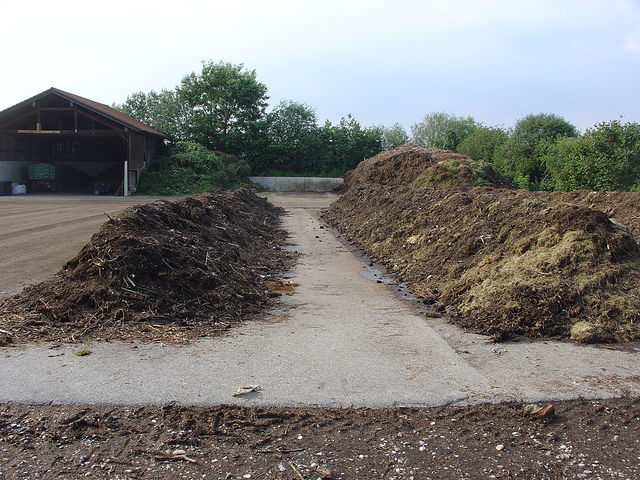Compost Volatiles: Difference between revisions
mNo edit summary |
|||
| (2 intermediate revisions by the same user not shown) | |||
| Line 16: | Line 16: | ||
* ketones | * ketones | ||
* toluene, ethylbenzene, 1,4-dichlorobenzene, p-isopropyl toluene, and naphthalene | * toluene, ethylbenzene, 1,4-dichlorobenzene, p-isopropyl toluene, and naphthalene | ||
==Possible Approach== | |||
To accelerate composting and increase the amount of off-gases, the compost could be aerated. After capture of the off-gases, it needs to be cooled down for condensation. A [https://en.wikipedia.org/wiki/Heat_exchanger heat exchanger] can recapture most of the temperature to make the process more efficient. After condensation, what remains in the gaseous phase will be mostly CO2, N2, and O2 (discard these). The watery solution can then be heated again (for evaporation) and cooled again (for condensation). Further steps will be necessary, depending on what you want to isolate. | |||
==Related Pages== | ==Related Pages== | ||
| Line 23: | Line 26: | ||
==Links== | ==Links== | ||
* http://www.sciencedirect.com/science/article/pii/S135223109800260X | * http://www.sciencedirect.com/science/article/pii/S135223109800260X | ||
* http://www.sciencedirect.com/science/article/pii/S0043135404000028 | |||
[[Category:Food and Agriculture]] | [[Category:Food and Agriculture]] | ||
[[Category:Biofuel]] | [[Category:Biofuel]] | ||
Latest revision as of 14:40, 29 August 2016
Composting releases volatile organic compounds (VOCs). Some of them may be interesting as biofuels or chemicals. The gaseous emissions would have to be condensed first and then refined (separated). The spectrum of VOCs differs by type of composting, feedstock, aeration, etc.
Some Chemical Components
- alcohols (e.g. ethanol)
- carbonyl compounds
- terpenes
- esters
- sulphur compounds
- ethers
- alkylated benzenes
- alkanes
- ketones
- toluene, ethylbenzene, 1,4-dichlorobenzene, p-isopropyl toluene, and naphthalene
Possible Approach
To accelerate composting and increase the amount of off-gases, the compost could be aerated. After capture of the off-gases, it needs to be cooled down for condensation. A heat exchanger can recapture most of the temperature to make the process more efficient. After condensation, what remains in the gaseous phase will be mostly CO2, N2, and O2 (discard these). The watery solution can then be heated again (for evaporation) and cooled again (for condensation). Further steps will be necessary, depending on what you want to isolate.

